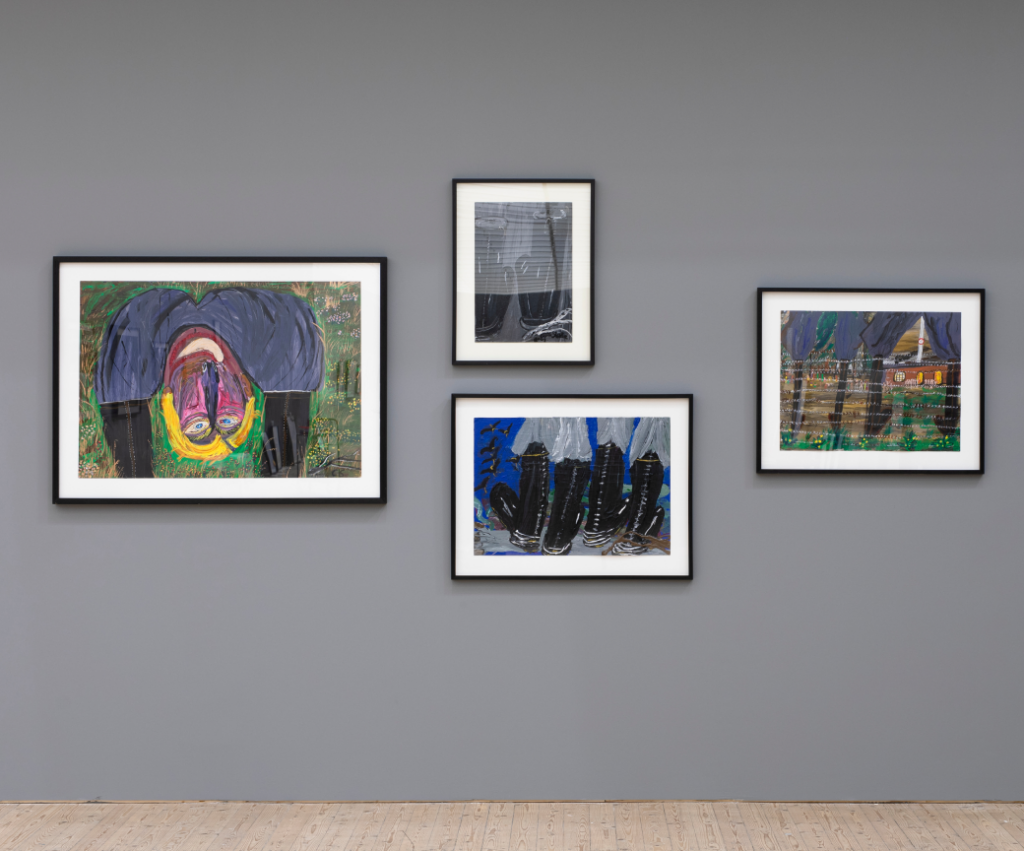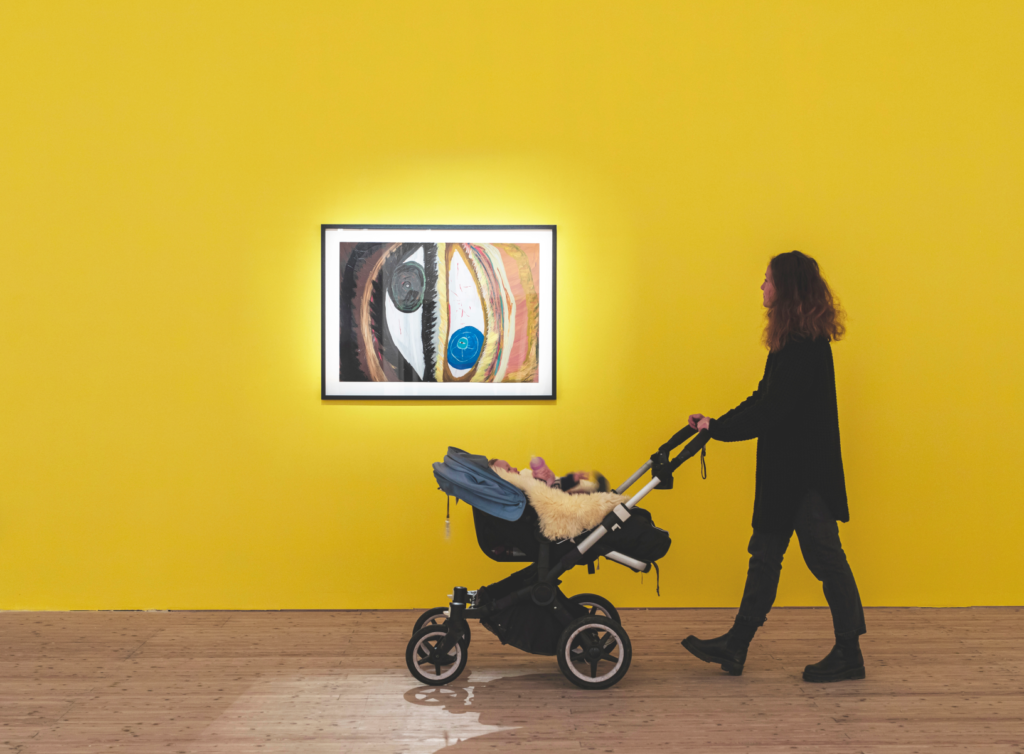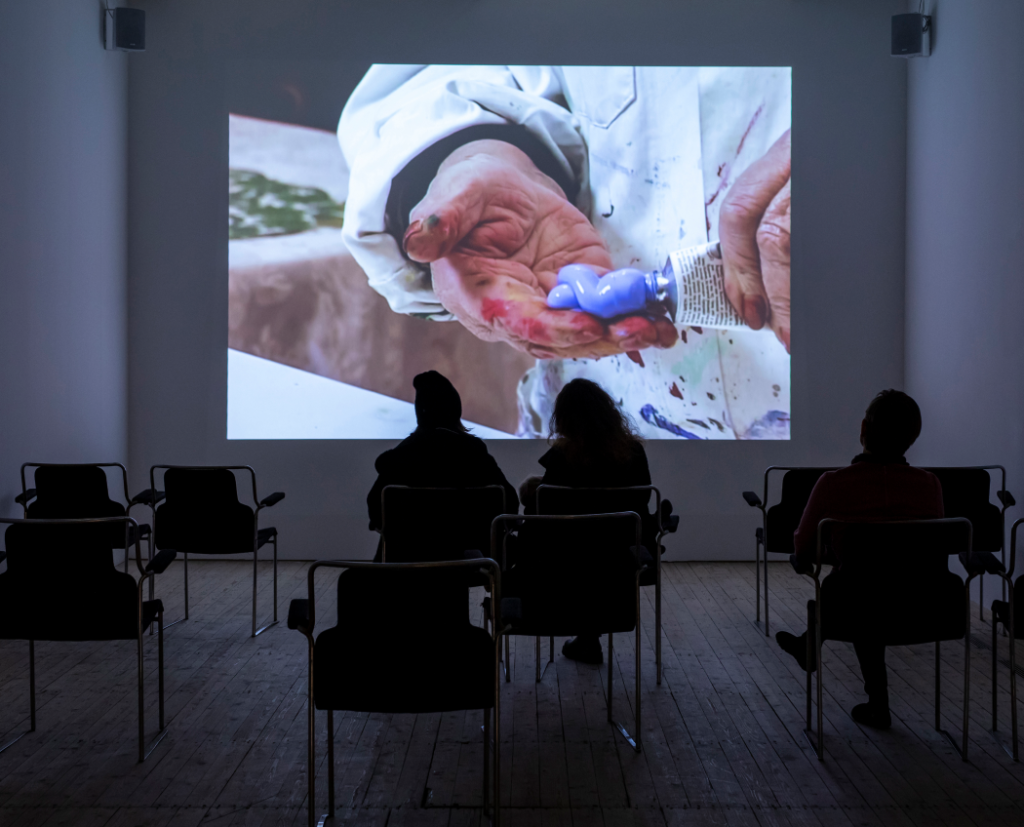
Ceija Stojka
30.1–30.5 2021
Roma artist Ceija Stojka (1933–2013) was born and raised in Styria in Austria, where her family made their living as traders. Following Nazi Germany’s annexation of Austria in 1938, her family was persecuted, arrested, and sent to the concentration camps. Stojka was barely ten years old when she arrived at Auschwitz. She survived three concentration camps: Auschwitz-Birkenau, Ravensbrück, and Bergen-Belsen. Out of her entire family of about two hundred people, only six survived: herself, her mother, and four of her siblings.
One of the first Roma to testify about the Holocaust
It wasn’t until more than forty years has passed that she finally broke her silence, and gave, as one of the first Roma women, an account of her own memories and experiences of the Holocaust. She has chronicled her childhood in several books, and in over 1,000 paintings and drawings. Her first autobiography, “Wir leben in Verborgenheit” (We Live in Seclusion) was published in 1988. She was encouraged by documentary filmmaker Karin Berger, who made two films about her. In the exhibition, an excerpt from one of these, “Unter den Bretten hellgrünes Gras” (The Green Green Grass Beneath), which details her time at Bergen-Belsen, is shown.
Self-taught artist
Stojka was a self-taught artist, who gradually developed her own style, which incorporated bright colours and forceful expressions. She didn’t paint exclusively with a brush, but also used her hands, and she did all her work in her home, either in the kitchen or in the living room. Many of her pieces incorporate writing, either directly or on the verso, thus combining word and image to produce a holistic narrative. The exhibition catalogue reflects Stojka’s recurring practice of fusing image and text in her art.
Europe must never forget
Around 140 drawings and paintings produced between 1990 and 2012 are featured, organised by subject. The presentation follows Ceija Stojka’s life: before, during, and after the war. Stojka was motivated by a desire to tell the story of what happened to the Roma people during the Nazi regime, and constantly emphasised the importance of never forgetting or denying their story. She opposed the racism and antiziganism that continued to prevail in her native country of Austria as well as in large parts of the rest of Europe. She once said: “I’m afraid that Europe is forgetting its past, and that Auschwitz is only sleeping.”
I’m afraid that Europe forgets its history, and that Auschwitz is just asleep
/Ceija Stojka
The exhibition was produced in collaboration with the Ceija Stojka International Fund, and in dialogue with Roma Information and Knowledge Center (RIKC) in Malmö. Curators: Noëlig Le Roux and Xavier Marchand. The exhibition concept was originally conceived by La maison rouge (Paris) in 2018.
During the exhibition period, as a part of the project Öppna Malmö (Open Malmö) – the city of Malmö’s initiative to combat discrimination and racism 2020–2022 – Malmö Konsthall will offer an extensive programme of narrative guided tours, lectures, and other activities intended to raise awareness of Roma history and culture in Sweden.
The best exhibition in the history of the konsthall, without a doubt
Birgitta Rubin, DN



